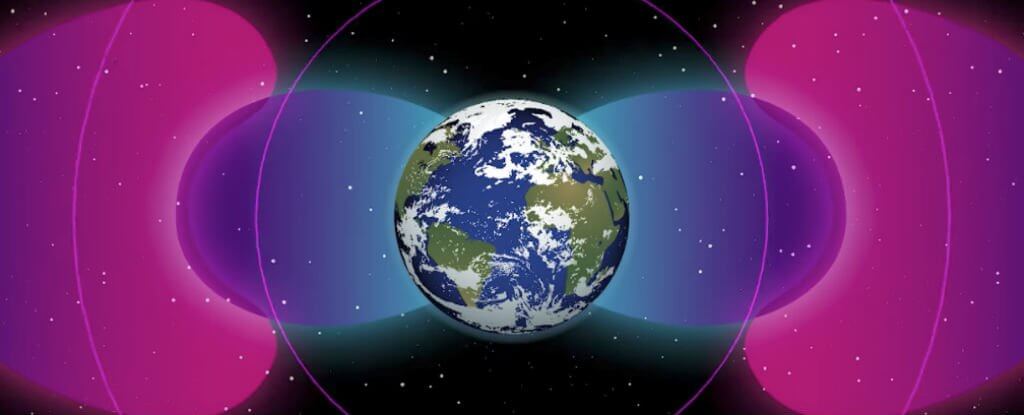
Scientists say that we are moving towards a new era of activity of mankind is already so high that we have begun to change even the cosmos. Running on the orbit space probes NASA has determined the existence of a huge man-made “barrier” that surrounds our Land. Studies of the barrier show that it extends far beyond the atmosphere of our planet, influencing space weather. The good news is that, unlike our effect on the planet, a giant “bubble” that we created in space actually works in our favor.
In 2012, the us space Agency NASA launched two space probe. Working in tandem, they are studying “radiation belts van Allen.” Our planet is surrounded by two radiation belts (and one temporary). The inner belt is stretched to a height of 640 to 9,600 kilometers above the Earth’s surface, while outside is located on the heights 13 500-58, 000 kilometers.
Recently, NASA probes, observing the behavior of highly charged particles trapped by the magnetic field of the Earth, found something odd – a low-frequency barrier that, like a vise, dangerous solar particles and prevent them from advancing further. Scientists decided to conduct a deeper analysis of the phenomenon and found that the barrier in fact, in recent decades actively repels the van Allen belt from the Earth, and now the lower limit of cosmic radiation are much farther away from the surface of the planet than it was in 1960-ies.
The consequences
A certain type of communication, called very low frequencies (VLF), has in recent years become very common. They are used much more actively than those in 60-ies. While NASA says that VLF can affect the behavior and movement of cosmic particles. And according to aerospace agencies, with most of these VLF we have received anthropogenic (i.e. human-created) near-earth space weather.
“A number of experiments and observations have shown that under suitable conditions signals of radio communications passed through VLF frequencies can affect the properties of the near-earth radiation environment is highly charged,” says Phil Erickson, a member of the Observatory of Haystack (mA, USA).
Most of us are never faced with VLF-signals, but they are very actively used in engineering, scientific, and military operations. Since their range is only from 3 to 30 kHz, use them to send audio messages too weak. But they are perfect to send coded messages over long distances or great depths, so they are very often used for communication with submarines. Length of the waves allows them to bend around obstacles, so they are often used where very complex terrain.
Initially, scientists had no idea that VLF signals capable of escaping beyond the atmosphere, but as it turned out, they succeeded, and, moreover, they are able to create a huge protective background. And this was confirmed by the van Allen probes, which compared the position of boundaries of a “bubble” of VLF-waves with the boundaries of the Earth’s radiation belts.
“The size of the bubble corresponds exactly to the internal boundaries of the van Allen belt,” they say in NASA.
As soon as scientists have found that VLF signals are able to influence the movement of charged particles within these belts, they realized that in fact human-made barrier is actively repels these belts from the planet.
Despite the fact that VLF-bubble is at the moment, perhaps the best example of the positive impact of humanity on the near-earth space, it’s definitely not the only example of the exposure. In fact, we affect the surrounding us space since the 19th century, and a special activity from our side occurred in the past 50 years, which were numerous tests of nuclear explosions.
“These explosions have created artificial radiation belts around the Earth that later became the reason of damage of several artificial satellites. Among the other anthropogenic impacts on the space environment can distinguish the different experiments on the emission of chemical reagents, heating of the ionosphere by high frequency waves, and the interaction of VLF-waves with natural radiation belts of the planet”, — the report says NASA.
As we wrote in a previous article, at the time a famous American astronomer Carl Sagan wanted to find traces of life on our planet from space. Taking into account similar technological characteristics can simplify the search for intelligent life on other planets.
Human activity has led to the creation of an artificial barrier around the Earth
Nikolai Khizhnyak